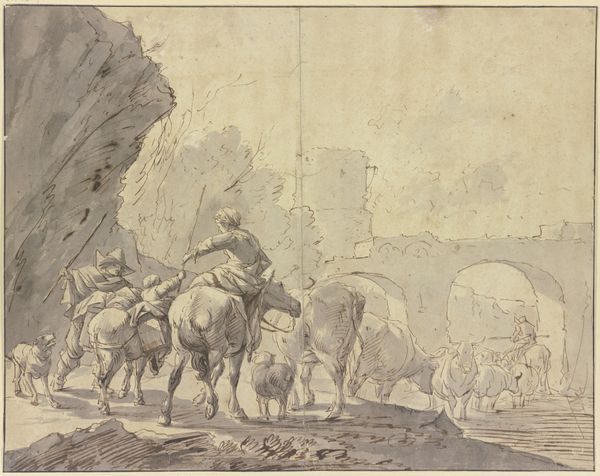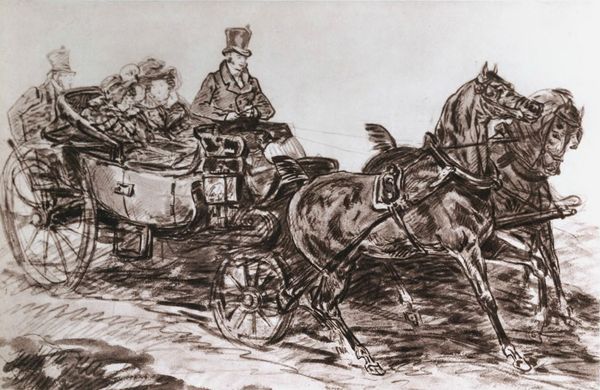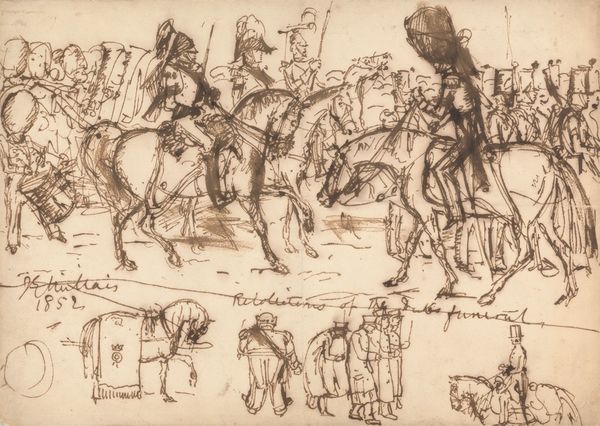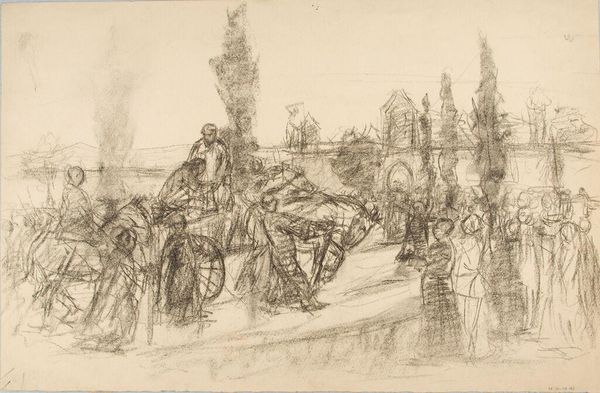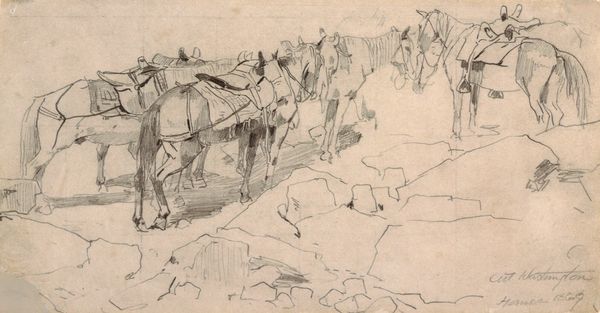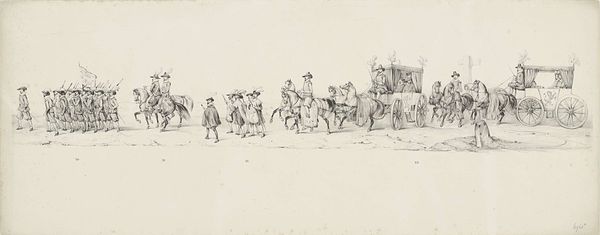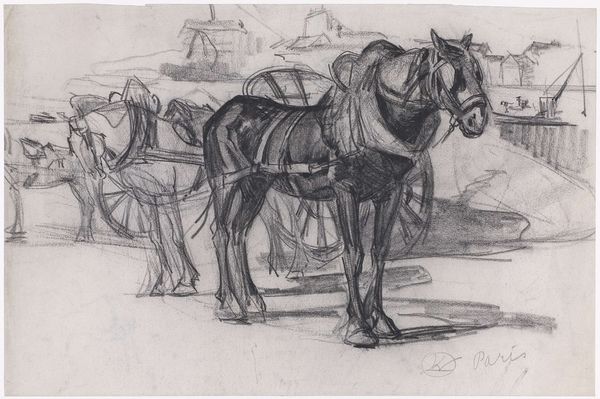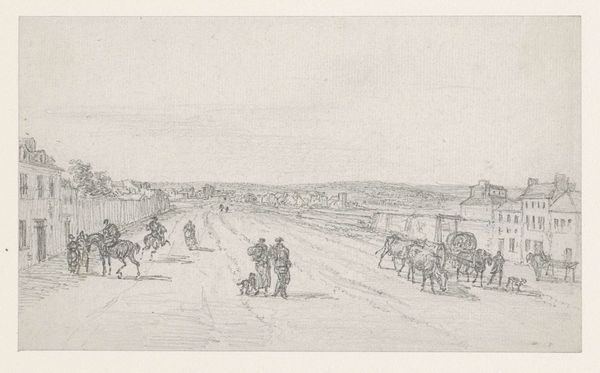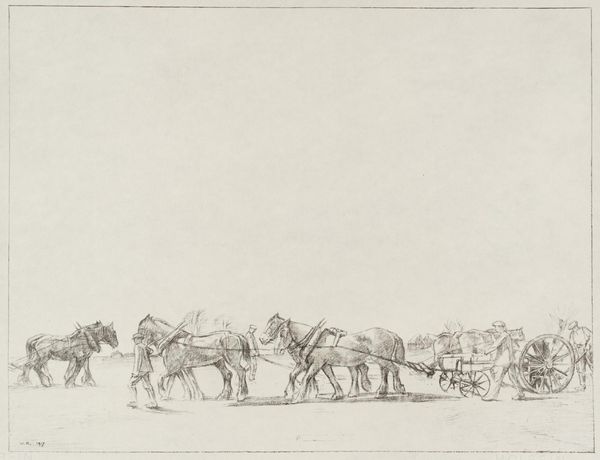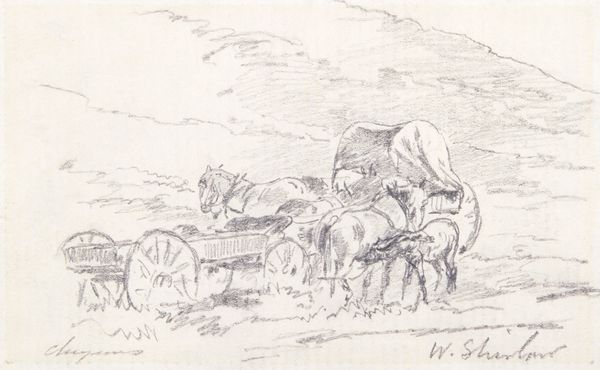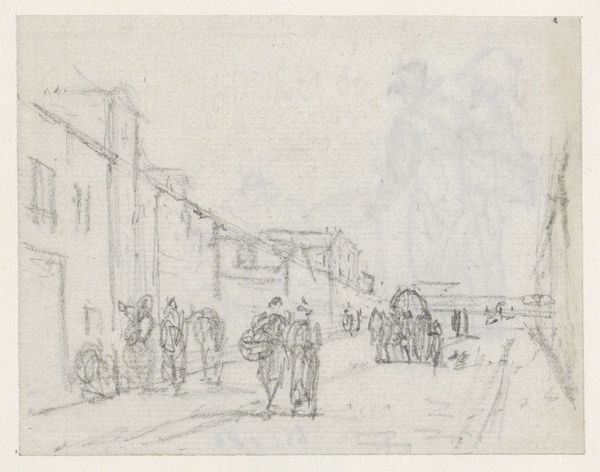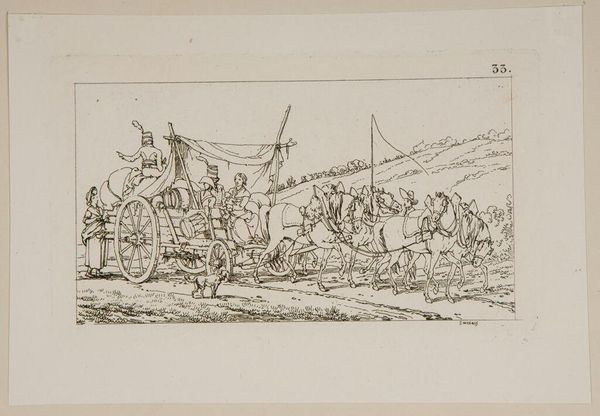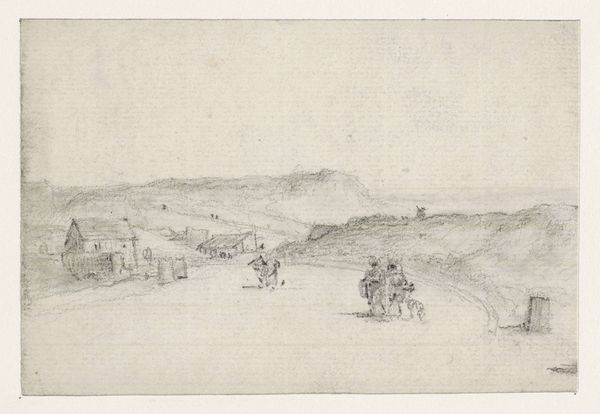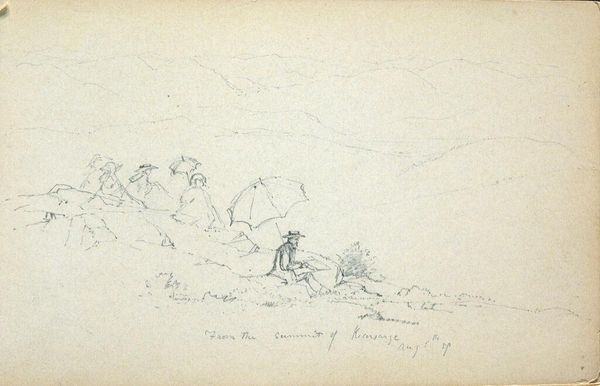
Copyright: Public domain
Editor: So, here we have Vasily Polenov’s "The Cart with the Wounded," created in 1876. It’s a pencil drawing. There's something about the starkness of the lines that evokes a somber mood. How do you interpret this work, particularly considering the time it was made? Curator: It’s crucial to remember that 1876 was a period rife with social and political upheaval in Russia and Europe. The subject matter itself - a cart presumably carrying wounded soldiers - speaks directly to the realities of conflict, possibly the echoes of the Crimean War or premonitions of the Russo-Turkish War. Look at how the artist uses the very *style* of a sketch—usually preparatory—to document what looks like an ongoing and unresolved event. Doesn't that contribute to a feeling of immediacy, like a snapshot of suffering amid rural life? Editor: I see what you mean. The sketch-like quality almost makes it feel like reportage. Does the presence of the medical cart, marked by a cross, change the way people might have viewed medical assistance or the military during this period? Curator: Absolutely. The prominent depiction of the Red Cross on the cart likely aimed to stir public sentiment. It spotlights the emerging role of humanitarian organizations and perhaps gently pushes back against the glorification of warfare prevalent in some circles. Think about the visual power of such a recognizable symbol in a largely agrarian, and perhaps illiterate, population. It becomes a powerful statement on the cost of conflict. How do you see this sketch functioning within the artistic trends of the time? Editor: I suppose, placed within realism, it shifts focus from idealized heroism to everyday suffering and that there is beauty, truth, and purpose even here. The road that curves to the background suggests that suffering keeps extending. I wonder what the fate is of these individuals! Curator: Precisely. The work uses art as a form of social commentary and also anticipates later trends in documentary photography and war reporting. This definitely alters how I see sketches that would seem ordinary at first glance! Editor: This conversation truly changed my perception, especially regarding art's role in shaping public perception of war and aid during that time. Thanks!
Comments
No comments
Be the first to comment and join the conversation on the ultimate creative platform.
